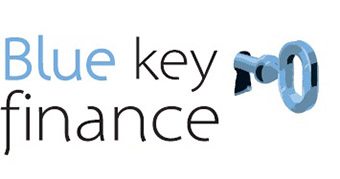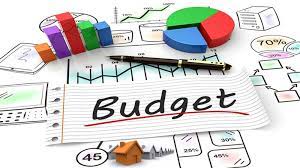Support for you in a rising interest rate environment
We want to support customers in a rising rate environment where there are also additional cost of living pressures.
We can help you estimate the impact of an increase to your minimum required repayment amount by using our repayments calculator.
For those of you who require support to manage the impact of this change, please discuss with us whether any of the following options may assist you:
What is a split loan?
-
A split home loan is when you divide your loan into two or more parts ay any proportion. You could, for example, nominate a portion of the loan to have a fixed interest rate, and the remainder to have a variable interest rate, or have multiple loans of the same loan type.
Features & benefits
-
The certainty of a fixed rate
A Fixed Rate home loan gives you the confidence of knowing how much your repayments will be and protects you against rate rises during the fixed-rate period (however, you wouldn’t benefit from a drop in interest rates).
-
The flexibility of a variable home loan
A Standard Variable Rate home loan offers flexibility such as redraw, offsets and the ability to make unlimited additional repayments.
Changes in your life could also mean you need to change how you repay your home loan. We explain how you can increase or decrease your repayments.
Over the course of your home loan, your repayments might need to be adjusted. Depending on the type of your home loan and the type of adjustment, you may have the flexibility to make a change yourself.
Conversely, your Bank may make an alteration at theirend to ensure the loan is repaid within the agreed loan term.
Decreasing your repayments
If you have a variable rate home loan with your Bankl for which you’re paying principal and interest, and they’ve reduced the interest rate – which reduces the interest you pay – or you’ve gotten ahead on your loan by making extra repayments, you may be able to reduce your home loan repayments to free up some cash.
Increasing your repayments
If you have a variable rate home loan for which you’re paying principal and interest, and you’d like to pay your home loan off faster and reduce the interest you’ll pay over time, you can increase your repayments.
If the Bank needs to increase your repayment amount because of something like an interest rate rise, or they have to recalculate your payments due to a large redraw or because you’re rolling off a fixed or introductory period, they’ll send you your home loan statement with a letter that outlines:
- Your new required repayment amount
- When this will take effect
- Any other action that you need to take.
You’ll have a minimum of 20 days between receiving this notification and having to make the updated repayment. If you think you’ll have difficulty making this repayment amount, the best thing to do is speak to us your Bank.
Budget Planner
Organise your budget
It’s easy finding out how much more you can put away regularly to meet your goals sooner. Simply enter your current income and expenses in our Budget Planner , picking from our suggested fields or adding your own to configure it just the way you want. You can then try varying the amount you spend to see how it affects your budget.
Home loan interest rates in Australia have been at all-time lows for the past few years, as the COVID-19 pandemic and its associated economic impacts have taken a toll. However, like all variables within the economy, interest rates can and do change.
As we see rates start to increase, prospective home buyers should think carefully about what type of loan best suits their needs – fixed, variable, or split.
If you already have a home loan, now might be the time to ensure you are getting the most out of your loan. Your Bank will generally have the flexibility to change to suit your changing needs.
A fixed rate loan remains the same even if interest rates rise, while a variable rate loan can increase, meaning higher repayments. A split loan can help to manage the risk of higher repayments in the future by letting you fix some of the loan and leave the rest variable.
Here we step through the different options to consider and how they work.
Locking in a fixed rate loan
In a rising rate environment, some borrowers prefer to lock in a fixed rate for a period of one to five years. This protects them against paying any future interest rate increases for the fixed period, and provides certainty that their repayments will remain the same.
While this may work for some, it’s important to remember that fixed rate loans come with certain conditions.
- You may be limited in how much extra you can repay off the loan during the fixed rate period.
- You may not be able to access features such as redraw or offset accounts.
- If rates fall during this time, you won’t benefit from a reduction in your repayments.
Also, fixed rate loans are locked into a contract. There can be fees involved if you wish to break the loan for any reason, such as if you refinance or sell your property. For these reasons, some borrowers prefer a variable rate loan.
Opting for a variable rate loan
Variable rate loans can change at any time, usually when changes to the official cash rate rate are announced by the Reserve Bank of Australia (RBA).
These types of loans are flexible, and depending on the conditions of the loan, they allow you to do things like:
- Make unlimited extra repayments, to help you pay your home off as quickly as possible.
- Link to an offset account, so your savings can help reduce the interest payable.
- Change your loan or refinance at any time without any break fees or financial penalties.
While a variable rate loan can be more flexible than a fixed rate one, there are potential downsides. If the RBA cash rate goes up or if your lender increases rates, your mortgage repayments will increase, too. Consider how your budget could be impacted if your mortgage increased by $100 per month, $500 per month or even more.
COVID support
-
We understand dealing with the COVID-19 pandemic has been a tough time for many Australians – lockdowns, job and business insecurity, and financial uncertainty are just some of the ways this pandemic has impacted our communities.
We’re here to support you and/or your business, and to help you get back on-track as quickly as possible.
Visit your Bank’s COVID support page for ways you can request financial support from them.
What is financial hardship?
-
If there’s been a change in your circumstances and you’re finding it difficult to make repayments on your debts when they’re due, it’s likely you’re experiencing financial hardship.
What can cause financial hardship?
-
Changes in your circumstances can have a serious impact on your finances, and leave you experiencing financial hardship. These can include:
- Coronavirus
- Unemployment
- Serious illness or injury
- The loss of a loved one
- Family and domestic violence
- Natural disasters (e.g. floods, bushfires)
- Business downturns
How can your Bank help
-
Their Financial Assistance Solutions team can work with you if you’re expecting you won’t be able to meet your repayments, or if you’ve fallen behind.
They can help with your credit card and loan repayments, but not with money to cover your other debts and/or bills.
-
To help you, your Bank may:
- Ask you about your income and expenses (it helps them determine how they can best support you)
- Ask you for documents to support your claim for financial hardship assistance (e.g. a medical certificate or employment separation certificate)
Everything you tell your Bank will be confidential and assessed on a case-by-case basis. You can nominate someone to discuss your request for help if you prefer (e.g. a financial counsellor, friend or family member). Your Bank will create a plan of action together with you to get you back on-track.




Leave a Reply
Want to join the discussion?Feel free to contribute!